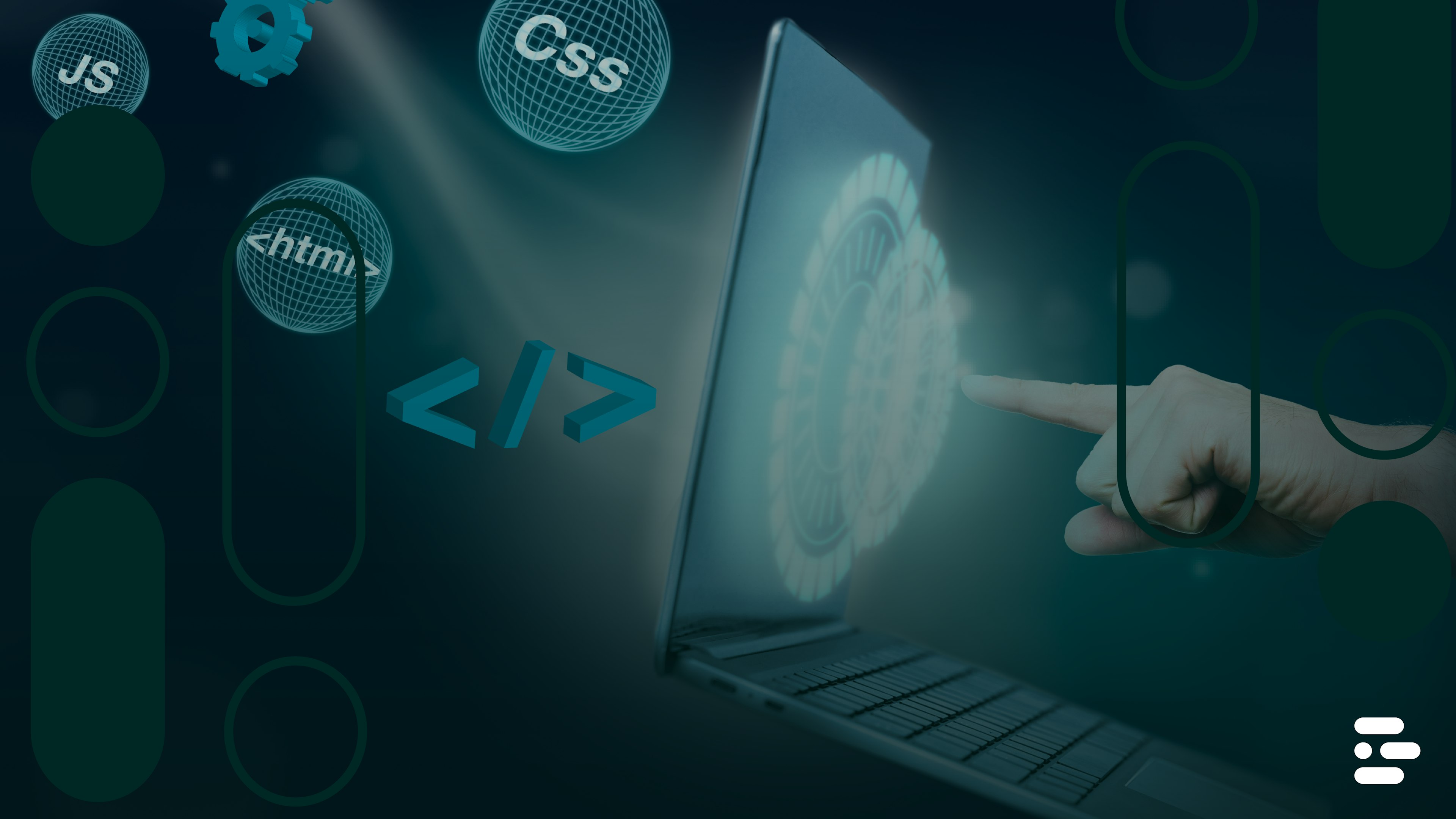How To Choose the Right Tech Stack for Your Software Project


Now more than ever, technology is transforming how businesses operate across various industries. The economic landscape is becoming increasingly competitive, with digital transformation at the center of organizations' daily operations.
Choosing the right technology stack can immensely contribute to a company's growth and customer retention. Whether the focus is on customer engagement, data analytics, backend operations, or web development, the right technology infrastructure is crucial. Failure to select the appropriate tech stack can result in the loss of revenue, time, and other valuable resources. That's why experienced business analysts and software developers should be integral parts of your software development team to help avoid pitfalls and mistakes.
There are various technology stacks available depending on the software project, but understanding when to use them and what options are available can seem daunting.
In this article, we will explore the definition of a tech stack, how to choose the right one, its key components, and the various tech stack models.
What is a Tech Stack?
Popularly known as a software stack, a tech stack refers to a collection of programming languages, tools, and frameworks that help build a software application, web app, or mobile app. The tech stack forms the foundation of any digital product and defines how the software product will function and interact with users.
The complexity of your project will determine the types of technologies that will be required. For instance, if your software development team is building a web application, you might need a tech stack like the MERN Stack, which includes MongoDB, Express.js, React, and Node.js.
In essence, a tech stack can be likened to a computer chip. It goes beyond the server and databases that store your data to include the frontend tools that design your interface. It is the DNA of your digital product.
Top 7 Tips for Choosing the Right Tech Stack
Selecting the ideal tech stack is a vital part of the success of your software development project. This crucial decision impacts not just the immediate performance of your digital product but also its long-term maintainability, scalability, and security. Below are seven main considerations for choosing the right tech stack.
Performance
The overarching goal of any software product is to fulfill its promise to customers by solving specific problems. A well-chosen tech stack contributes to improved product performance, faster speed, and quick load times, all of which contribute to a seamless user experience.
Scalability
The right-fit tech stack allows your business to scale effectively, managing increased workloads and traffic as the web application grows to accommodate new customers and system complexity with ease. Think about scalability as more than just technology; it's also a way to change, modify, or improve features in your mobile application or web application.
Security
Cybersecurity is an important factor to consider when selecting the right tech stack for a project. With the increase in cyber threats, adopting a robust tech stack that can protect data and system integrity is crucial. This is especially important if you are building a health application where sensitive patient details will be shared. In this case, you should select a security-compliant programming language like Node.js, which has stringent security guidelines.
Maintenance and Cost
The ongoing maintenance of your product includes bug fixes, updates, and potentially adding new features. Your tech stack should be well-supported by a large community of developers. For example, the MEAN Stack, a collection of JavaScript technologies, has a large developer community that can guide your software development team in case of a roadblock. Leveraging this community and using popular tech stacks offer advantages and eliminate the need to reinvent the wheel, essentially making problem-solving and resource accessibility seamless.
Additionally, factor in the costs for licenses, server hosting, third-party services, and the team required to maintain the tech stack. Make sure these align with your budget not just for the launch, but for the life of the product.
Team Skill Set
Consider whether the tech stack aligns with your team's expertise and skill set, as this will enable faster development and speed to market. In cases where a specific tech stack is required for your project and your team lacks that particular skill set, you can take advantage of software development partners like Devsu.
Using software development companies will expand your team's capabilities and software stack with A-list developers proficient in different tech stacks, removing inefficiencies and slow development rates.
Type of Product
It is pertinent to take into account the type of software product you are building—its complexities, anticipated traffic, objectives, and growth potential. Smaller projects with fewer complexities might not require advanced technologies; they can often be market-tested effectively using a Minimum Viable Product (MVP). Conversely, larger projects, like expansive online networks similar to Amazon or Facebook, will demand advanced frameworks and a diverse set of programming languages to deliver a higher level of functionality.
Future-Proofing
With the tech industry evolving rapidly, it's possible that what's trendy today might be outdated in a couple of years. When choosing your tech stack, look for technologies that have a history of community support and regular updates. This ensures that your technology stack stays relevant, offering you the benefits of new features and security updates.
How a Tech Stack Works
The tech stack consists of different functions and specialties, each coming together to contribute to the overall product.

Typical Layers of a Tech Stack:
Operating Systems and Programming Languages
These are the primary layers in the development environment that can impact how the application will perform. The operating system is the foundation that allows other functions to thrive. Examples include Windows, Linux, and macOS.
The choice of your operating systems and programming languages will depend on the platform where your software products will be launched, whether web, mobile, or desktop.
The operating system layer controls the underlying hardware and provides a platform for the other layers to operate on. Examples of operating systems include Windows, Linux, iOS, Android, and examples of programming languages are Swift, Java, Python, Ruby, JavaScript, etc.
Servers and Load Balancing
This layer includes servers and additional technologies that allow your application to send and receive requests, manage traffic, and scale as needed. It also handles load balancing to ensure the application can manage increased workloads efficiently. Popular services include Amazon AWS, Google Cloud, Microsoft Azure, and many other smaller services offering similar capabilities.
Data Storage and Querying
This layer is critical for any application that requires data persistence. It consists of databases—both relational and non-relational—as well as data warehouses. Technologies like SQL, MongoDB, and Cassandra come into play here, allowing you to store, retrieve, and manipulate data efficiently. This layer is important for storing your data and determining how users interact with your application.
Components of a Tech Stack
Before the growth of Software as a Service (SaaS) products and services, tech stacks were straightforward, with popular ones like Linux, Apache, MySQL, PHP (LAMP) for building web applications. There were also preferred web development tech stacks for building applications for Windows and Linux with non-open-source options like WAMP. Today, there has been a dynamic shift, with engineers combining various programming languages to build products for specific users and maximizing opportunities for scalability to meet constant demand.
Understanding the components of a tech stack is crucial for making an informed decision that aligns with your project's requirements. In general, the components of a tech stack can be backend or frontend technologies, or a combination of both. A technology stack can be divided into various components, each responsible for specific functionality within the application. Here are some of the core components of a tech stack:
Backend Technologies
This is the server-side technology for managing data storage, processing, and retrieval in a software application. For example, databases like MySQL, PostgreSQL, and programming languages such as Python, Java, or Ruby.
Frontend Technologies
The frontend is everything the user interacts with directly. It consists of the technology used to build the user interface of the web application. This includes HTML, CSS, and JavaScript, along with frameworks like Angular, React, or Vue.js for more dynamic interactions.
DevOps Tools
DevOps is the process and collection of technologies that allow teams to automate processes, streamline workflows, and collaborate efficiently. These include container orchestration tools like Kubernetes, continuous integration/continuous deployment (CI/CD) pipelines, and monitoring tools like Prometheus.
The Top 10 Tech Stack Models

As previously mentioned, numerous technology stack models can help you build quality software products. We have highlighted the top 10 tech stack models that have grown in popularity and can offer your business a competitive edge.
LAMP Stack
The LAMP stack is a combination of four open-source technologies—Linux, Apache, MySQL, and PHP—that software developers use to develop and manage web applications. This tech stack is commonly used by top tech giants like Slack, Facebook, and WordPress for their web applications and websites. It is typically best suited for web applications as well as small to medium-sized websites. Being open-source technology, it is managed by a large community of developers.
MEAN Stack
This refers to a JavaScript-based technology framework for building web applications. The four technologies that make up this stack are MongoDB, Express, Angular, and Node.js. It is ideal for dynamic websites and applications and allows for building web applications entirely in JavaScript, providing a great development experience.
MERN Stack
The MERN Stack comprises MongoDB, Express.js, React, and Node.js. It is ideally suited for building scalable applications that can be deployed quickly. One of its main advantages is React's extensive library, which simplifies the process of creating dynamic frontends. This tech stack is particularly favored for Single Page Applications (SPAs) and is known for its efficiency and speed.
Ruby on Rails Stack
This tech stack includes Ruby, PostgreSQL, and often employs frontend libraries like AngularJS or React. It is a go-to choice for the rapid development of web applications. Ruby on Rails enforces strong conventions and sensible defaults, thereby accelerating the development cycle. This stack is especially beneficial for startups and small businesses looking for quick deployments.
Django Stack
Django Stack is built on Python, Django, MySQL or PostgreSQL, and Apache. It is the ideal choice for applications that require robust data analytics or machine learning components. Django comes with a wealth of built-in tools that facilitate rapid development, and its use of Python ensures that you have one of the most versatile languages at your disposal.
.NET Stack
Comprising C#, .NET, and Microsoft SQL Server, this stack is best suited for enterprise-level applications. It is particularly effective for Windows platforms. With strong backing from Microsoft, this tech stack provides extensive support and libraries to build scalable and robust applications.
JAMstack
JAMstack employs JavaScript, APIs, and Markup to deliver performance-focused websites requiring dynamic client-side rendering. It offers extremely high speed and security, providing a great developer experience. JAMstack is often employed in projects that need superior performance and security, such as e-commerce websites or blogs.
Flutter for Web Stack
This tech stack uses Flutter, Dart, and Firebase and is designed for creating cross-platform applications. One of the primary advantages is the "write once, run everywhere" principle, which significantly saves time and resources. It allows developers to maintain a single codebase for both iOS and Android, thereby optimizing development efforts.
Spring Boot Stack
This Java-based tech stack involves the use of Spring Boot and Apache Tomcat. It is generally employed for building microservices and scalable web applications. Spring Boot eliminates much of the hassle of setting up a Spring application, making it easier to create production-grade applications quickly.
Serverless Stack
The Serverless Stack utilizes components like AWS Lambda, API Gateway, and DynamoDB. This stack is best for applications where maximizing cloud resources is a priority. One of its key advantages is significant cost reduction; you pay only for the compute time you consume. Also, it scales effortlessly with demand, making it a flexible choice for varying workloads.
How To Build The Right Tech Stack
Switching your tech stack in the middle of a project can be tough, especially after you have already invested time and resources. Choosing the right tech stack is a strategic technical decision that requires a thorough evaluation of both your immediate project needs and your long-term business objectives.
Software Development Team Evaluation
The first step in constructing your ideal tech stack involves a deep dive into your project requirements. Are you creating a complex, data-heavy analytics tool? If so, you'll need a tech stack capable of handling large databases and facilitating real-time data processing. List the features you'll need both now and in the future to determine which technologies are capable of meeting the tasks ahead.
Similarly, align your tech stack choice with your business objectives. Decide between industry-specific tools and process-specific tools. While industry-specific tools focus on best practices within a given industry, process-specific tools are more like off-the-shelf solutions.
Assess Software Developer’s Skillset
Assess your software developers and understand their skill sets. Your developers are your frontline experts, and understanding their strengths and weaknesses can greatly benefit the development process. For instance, ask questions like: Do they have hands-on experience with cutting-edge web development stacks? What technologies are they most comfortable with? Their insights can significantly inform your tech stack decisions.
Scalability
Scalability isn't just about handling more data or an increase in user traffic; it also involves considering a tech stack's long-term viability. Will the technologies you're considering be supported and updated for the foreseeable future? Can they adapt to emerging technological trends? Choose a tech stack that can grow alongside your business.
Seamless Integration
The tech stack you adopt should easily integrate with other third-party applications. This will facilitate seamless data exchanges and allow software developers to work effectively without integration issues. As data-driven decision-making continues to gain prominence, ensure that your tech stack either includes robust data analytics tools or is compatible with the ones you intend to use.
Affordability
Being able to afford the tech stack you select is crucial. Discuss future pricing and other options with your vendor for long-term planning.
Consider Current Trends and Community Support
Access to a vibrant community of developers can be a game-changing advantage. A well-supported tech stack is likely to have a wealth of third-party tools, libraries, and frameworks that can speed up your development process and introduce new functionalities.
Build, Measure, Learn
After you have launched your Minimum Viable Product (MVP), make it a priority to use analytics tools to monitor its key performance indicators. Ask critical questions: Is the application performing as expected? Is the user interface intuitive? The answers to these questions will serve as invaluable insights for refining your tech stack for the final product.
Prioritize DevOps
DevOps is a fundamental aspect of tech stack decisions. The right DevOps tools can streamline your development process, simplify ongoing application maintenance, expedite updates, and help your team manage downtime efficiently.
Conclusion
In an age of digital transformation, every business needs the right tech stack to build software applications that solve customer problems. A well-chosen tech stack is a strategic asset that can fuel your business growth and enable you to adapt to ever-changing market dynamics. Following this comprehensive guide in selecting and scaling your tech stack will help your organization navigate challenges more quickly and improve business results.
Scale Your Tech Stack
Are you looking to scale your tech stack with the right skill set and developers well-versed in the latest technologies? Leverage Devsu's expertise and augment your team with high-quality software developers. Contact us.
Subscribe to our newsletter
Stay informed with the latest insights and trends in the industry
You may also like


